The Orographic Effect – What It Is & Its Impact On Weather Conditions
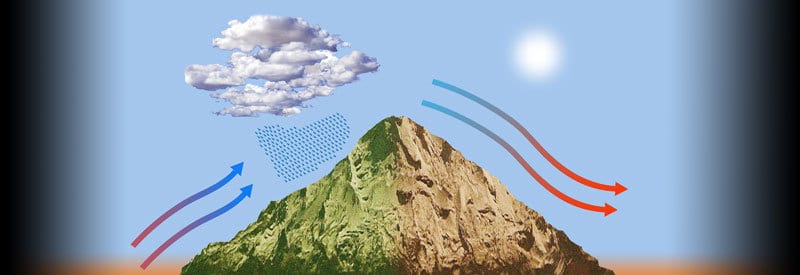
Many readers will be familiar with the impact of warm and cold fronts, wind, and other events on weather conditions. A region's topography also plays a crucial role, as the orographic effect clearly illustrates.
An orographic effect or orographic lifting is defined as the process that occurs when air moves over an elevated terrain, like a mountain. The rising air leads to a drop in temperature, resulting in condensation, cloud formation, and possible precipitation on the windward side of an elevation.
The term will probably sound a bit foreign, but readers will definitely be familiar with the physical environment and atmospheric conditions that the term refers to.
Depending on the location where you live, you may be surrounded by vast flat plains, mountains, valleys, or situated next to the ocean. All these surrounding topographic features have a much more significant effect on the local weather than you think.
In this article, we look at what the orographic effect is and how it develops. We also examine its impact on the environment.
Orographic Effect Definition
Before we can look at the occurrence in more detail, we first need to clarify what precisely the orographic effect means:
What Is The Orographic Effect?
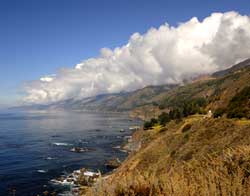
An orographic effect or orographic lifting primarily describes the process that occurs when air moves over an elevated terrain, like a mountain. The rising air leads to a drop in temperature, resulting in condensation, cloud formation, and possible precipitation on the windward side of an elevation.
Air cools down with an increase in altitude under normal circumstances. It rises due to a variety of factors. Surface air rise when the ground beneath it gets heated by solar radiation. When a cold front cuts underneath a warm front, it forces the air to rise.
During orographic lifting, however, there are no atmospheric conditions or weather elements that cause the air to rise. In this case, the air is raised "artificially" as the terrain it travels over starts to increase in height sharply.
The most significant consequence of this phenomenon is the orographic rain that is a direct result of the forced elevation with an increase in the height of the physical terrain.
Orographic Rainfall: How It Is Formed
In the previous section, the process through which orographic rain occurs has already been described in part. The best way to understand this type of rainfall, though, is to describe the complete process.
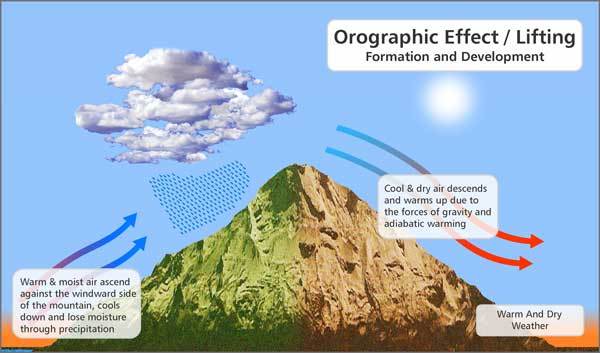
When the air reaches the mountain or escarpment slopes, it is forced to rise with the elevation of the physical terrain. As it gains altitude, the temperature starts to drop as a result of adiabatic cooling*. The air continues to cool as it keeps rising along the slopes.
(*Adiabatic cooling is the reduction in heat due to the expansion of air. As air rises up into the atmosphere, the barometric pressure lowers, allowing the air to expand and cool down. This process takes place without any heat added or taken away from the system.)
When air reaches dew point (the temperature at which water can no longer stay in its gaseous state) while still rising along the mountain slopes, condensation takes place.
If enough moisture is present in the clouds, the water droplets they contain will grow large enough to lead to precipitation. The amount of rainfall can vary from light drizzles to torrential downpours, depending on the amount of moisture contained in the clouds.
Effect Of Orographic Lifting On Vegetation
The process and influence of the orographic effect do not stop with the cooling down of air and resulting precipitation against a mountain's rising slopes.
The Creation Of Two Very Different Weather Conditions
By the time the air reaches the top of a mountain, it is cold and dry as a result of adiabatic cooling and precipitation that took place. Usually, on the leeward mountainside, the terrain drops in elevation at the same rate as the windward side.
With the lowering terrain, gravity forces the dry air down the mountain slopes. As it descends, the air gets compressed as a result of the increasing barometric pressure closer to the ground. The compression causes the air to warm up through adiabatic heating.
The Effect On Vegetation
The cold, moist air on the windward side and the warm, dry air on the leeward side of a mountain have a significant effect on vegetation.
Weather Conditions On Windward Slopes
Often, orographic lift occurs where a mountain is situated close to the ocean or large body of water. The moist winds that blow from the shores result in a constant supply of water to the mountain slopes facing the sea or lake, resulting in large-scale precipitation.
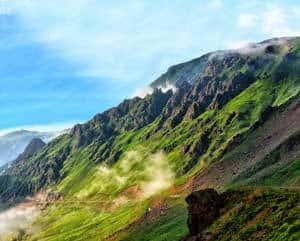
It is not surprising then to find lush vegetation on the windward slopes of mountains. Often, these slopes receive rain during large parts of the year as a result of a constant source of moisture from the ocean, as well as prevailing winds blowing from the sea.
Farmers and other businesses involved in the agricultural industry take advantage of this phenomenon by planting crops and developing plantations up the slopes where the largest percentage of rainfall takes place.
You can find some of the densest and lush regions of the world's rainforests around the tropics in South America and Africa on the windward sides of mountain slopes. It is a direct result of orographic lifting and the resulting constant precipitation.
Weather Conditions On Leeward Slopes
Sometimes, only 10 - 20 miles (16 - 32 kilometers) away from the cold, rainy atmospheric conditions, the weather cannot be more different.
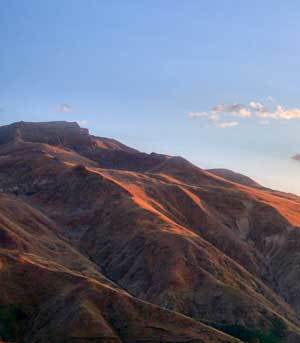
The cool, dry air that gets drawn down by gravity accelerates down the mountain slopes and warms up as a result of adiabatic heating. The result is warm, dry weather conditions, often accompanied by strong winds. The Chinook winds in the United States are a perfect example.
This means very little, if any, plant growth can occur in this climate. Where the windward side of a mountain may experience rainfall of 80 - 100 inches (2032 - 2540 millimeters), the leeward side of the elevation can receive as little as 10 inches (254 millimeters) or less.
As a result, large arid or semi-arid areas can be found on the leeward side of the mountain. In extreme cases, desert-like conditions can extend over vast regions.
The dry climate created on the leeward side of a mountain as a result of the orographic effect is also known as the rain shadow effect.
Examples Of The Orographic Effect
The orographic effect/lifting occurs throughout the world on a large or very localized scale. There are too many occurrences to list each one, but here are a few examples that will help to get a better understanding of what this phenomenon looks like in practice:
In the United States: The western slopes of the Sierra Nevada Mountains, California.
- In India: The Khasi and Jayantia Hills.
- In Australia: The Great Dividing Mountain Range in Southern and Eastern Region.
- In Europe: The Southern Andes Mountains facing the Pacific Ocean.
- In Africa: The northwestern face of Table Mountain.
- In Norway: The Oppland Mountain.
These are just a few of the many regions experiencing orographic lifting.
Conclusion
As this article clearly illustrates, even though the term orographic effect may sound foreign to you, the actual occurrence takes place all around the world and can literally be situated right on your doorstep.
The aim of this post was to highlight the orographic effect, define the occurrence, and explain the process through which it occurs.
You may want to have another look at your surroundings because wherever you may live, you will not find yourself far from a region experiencing the orographic effect.
Never miss out again when another interesting and helpful article is released and stay updated, while also receiving helpful tips & information by simply clicking on this link .
Until next time, keep your eye on the weather!
